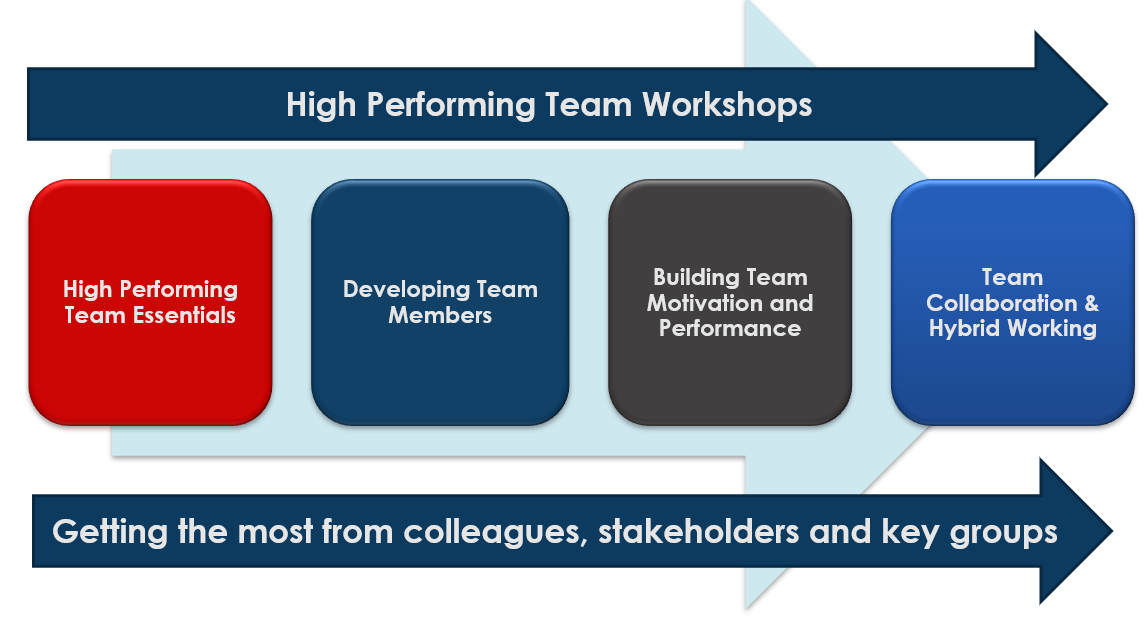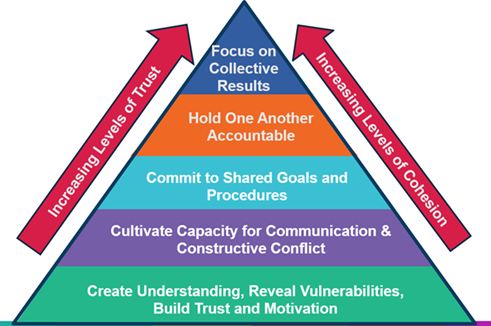
In today’s fast paced world, agility and cohesive teamworking are fundamental to success. Teams are forming and re-forming at pace. Organisations across the globe are restructuring to adapt to a dynamic and demanding marketplace. Networks of teams are reinventing themselves to stay ahead of the curve. High-performing teams achieve more than just the sum of their parts. They drive innovation, productivity, and growth. However, creating an effective team requires more than simply expecting a group of individuals to work together. Exceptional teams are built on trust, clear communication, and a commitment to collaboration and shared purpose.

Your teams are the most powerful unit of performance in your organisation. In most teams, there is scope to increase productivity and performance by at least 30%. So how do you achieve this?

Described by Patrick Lencioni as “the one competitive advantage that remains largely untapped”, we help you maximise the impact of new and existing teams. We offer customised team development, strategic team away-days and team coaching to fast-track success.
In his book “The Advantage: Why Organizational Health Trumps Everything Else In Business” Patrick Lencioni states that there are 6 critical questions every leadership team must ask. We help you answer:
"I really got so much out of the class and feel that myself and the rest of the team really learned a lot about each other and ourselves. It was great to start the work week with this class as it set the tone for how the team worked together for the rest of the week. I can’t say enough how beneficial and valuable the Insights course was for me. The personal profile report was spot on and was so uncanny how close it was to how I actually act and feel. You were such a delight to deal with and you are truly amazing at what you do."
Building a robust foundation of teamwork requires trust, managing conflict, agreeing accountability and commitment to a common purpose and collective results. Understanding and leveraging the value, strengths, personalities, motivations, and development areas of individual team members is fundamental to success. We help you identify the skills and talents of each person and build a plan to maximise individual and team full potential. Effective communication, constructive feedback, valuing diversity, and optimising innovation are key.

Team Effectiveness
Depending on your specific needs, we can fast-track team effectiveness by using a team diagnostic to evaluate HOW your team measures up and clarify focused areas for development. Alternatively, we can start by focussing on WHY, understanding and measuring team motivation and clarifying team purpose at the get-go. Dramatic improvements in team effectiveness are evidenced by enhancing self-awareness and interpersonal awareness, helping each team member understand their own personal style and HOW their colleagues prefer to work and interact.
Enhancing team effectiveness is essential for:
When exceptional teamwork is central to your organisational culture, business success is inevitable.
“Given the relationship between … teamwork and crucial business outcomes — such as productivity, profitability and customer perceptions of service quality — teams hold the keys to organisational health.” – Gallup
We'll help you optimise and refresh your purpose, vision and strategy; improve your ways of working; embed new skills and hold you accountable to deliver your goals and strategic objectives.
We’ll get back to you within 48 hours to discuss a blueprint specific to your business.
While we have aimed to provide solutions of how we can help, we appreciate that every organisation, team and individual is unique. If you would value a more specific conversation to help address your needs, please complete the form and we will respond as soon as possible.
We have helped unlock the potential in over 1 million individuals, hundreds of teams and more then 2,500 organisations since 1998. These are some of the clients we have partnered with, many of whom have been working with us for years. We are extremely grateful for the recommendations and repeat business we receive.
Don’t just take our word for it though, read some of our client feedback
+44 (0)1628 488990
Contact us+44 (0)1628 488990
Contact us